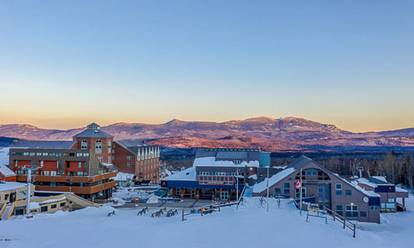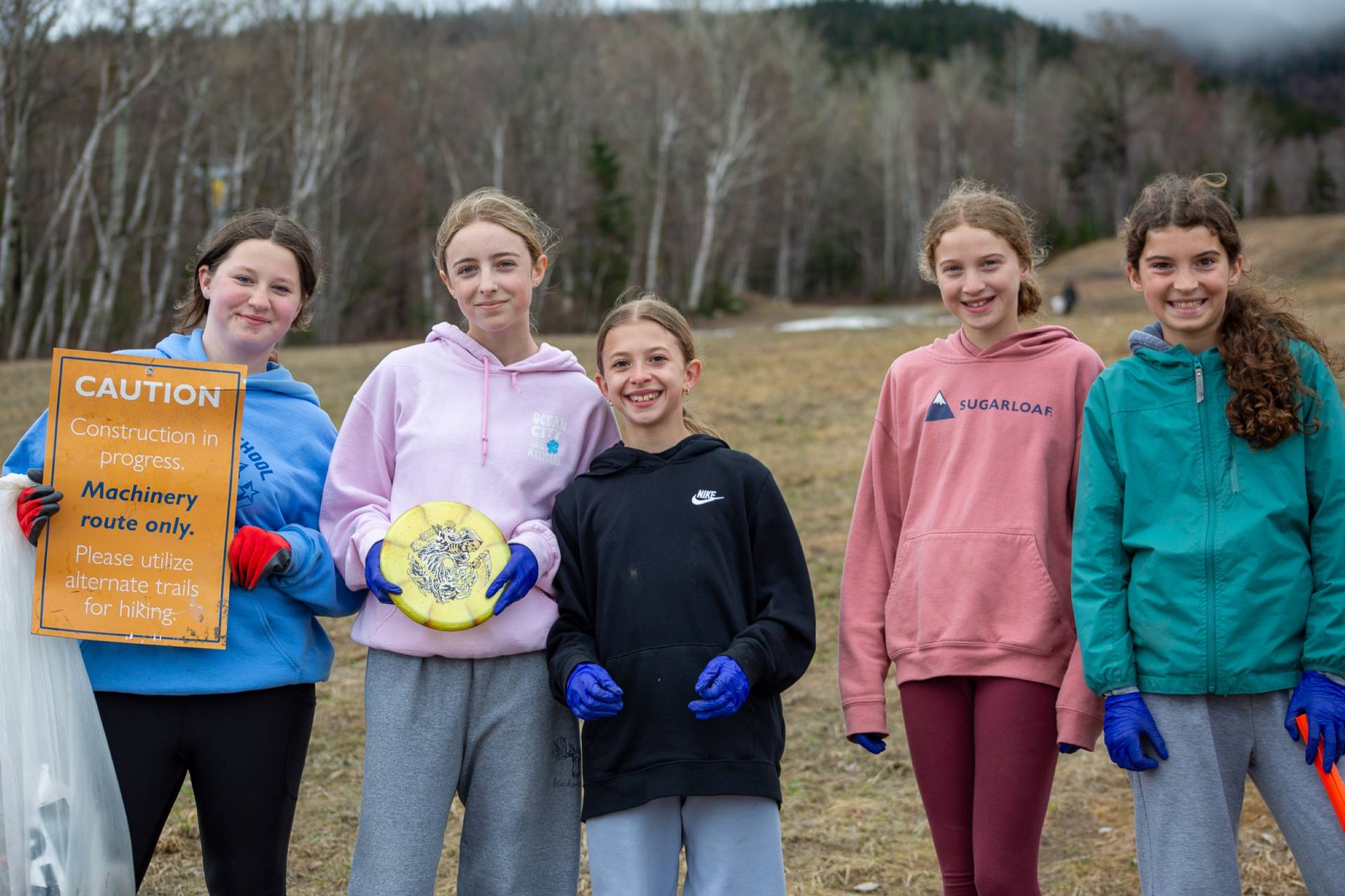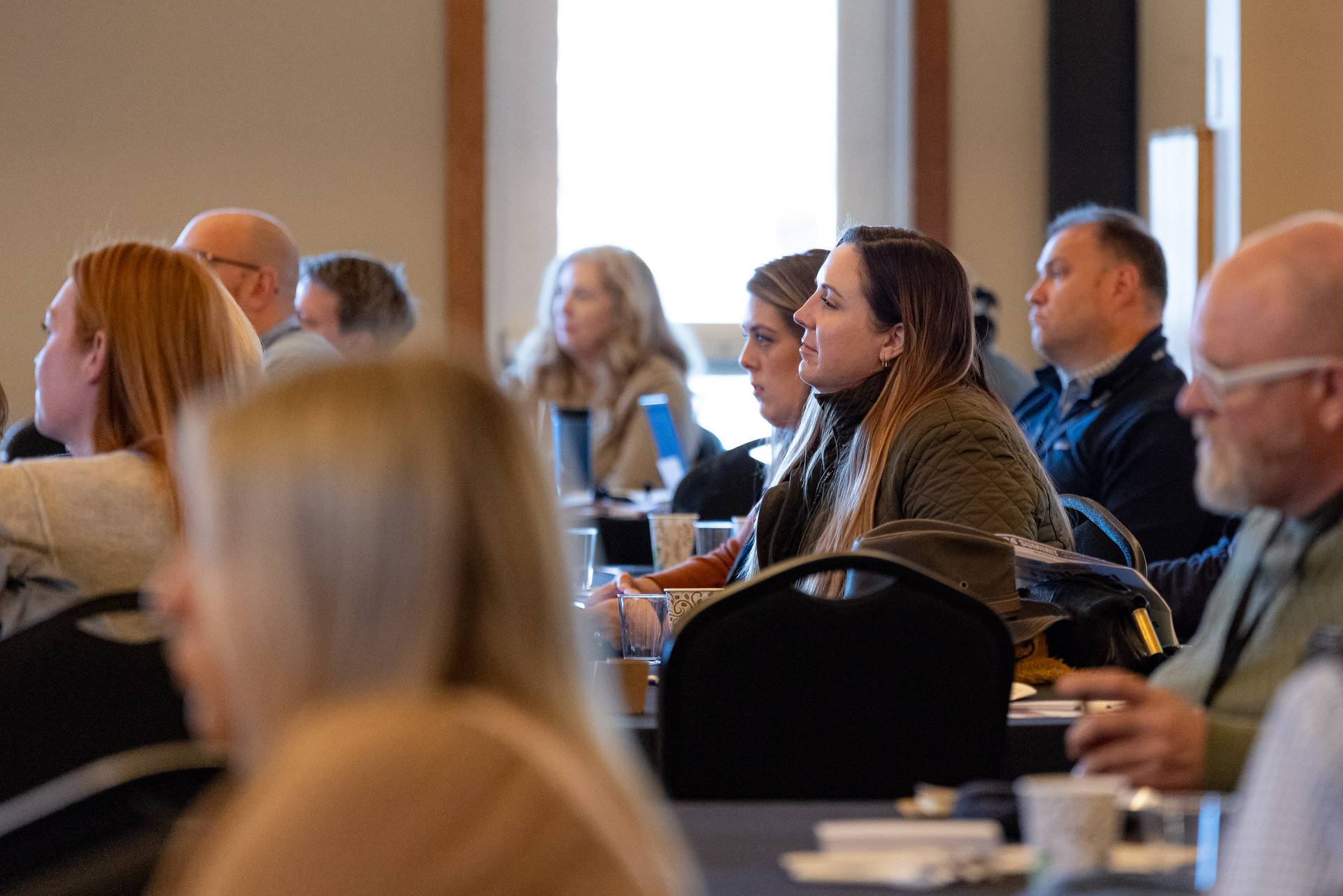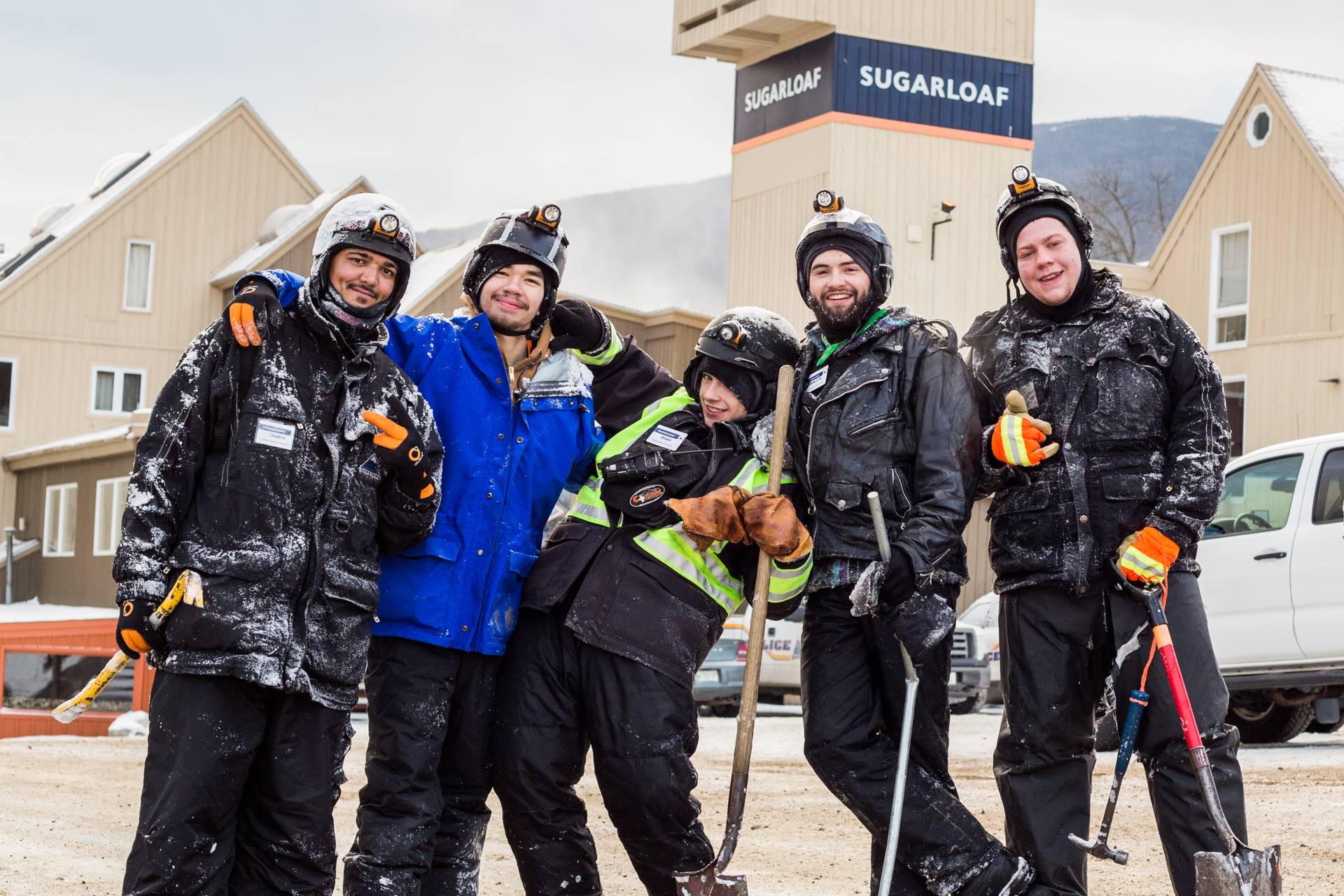sustainability at sugarloaf
FOREVERPROJECT
Boyne Resorts recognizes human-driven climate change as an urgent issue for the world, as well as for the snowsports industry. In early 2021, we formalized commitments to climate action and announced our ForeverProject. ForeverProject is an initiative to attain a sustainable tomorrow through collaboration, by positively affecting the lasting impact our resorts, team members, and guests have on the planet. Sugarloaf is committed to sustainability, and we're working hard to reduce our environmental impact at every level of resort operations.
- Power all operations with 100% clean electricity
- Reduce dependence on carbon-based fuels in existing buildings through energy efficiency upgrades and electrification
- Develop and implement high-efficiency green building standards for design and construction of new facility and real estate projects
- Upgrade our lift networks, installing the most technologically advanced lifts, and enhancing the energy efficiency of lift houses
- Install low-energy equipment while expanding snowmaking
- Add on-site renewable energy generation projects
- Monitor emerging technologies to identify opportunities to maximize efficiency and electrification of fleet vehicles and equipment
- Seek partnerships with local and/or meaningful programs to sequester carbon
- Expand composting- Sugarloaf currently collects food scraps from local restaurants and businesses that are composted on-site
- Enhance recycling -Sugarloaf has enhanced recycling through improved signage and educational training for community members and the recent addition of a community recycling center Fall 2022. While also recycling other waste products such as engine and hydraulic oil in the garage
- Partner with local and non-profit organizations to donate/repurpose items, from uniforms to equipment and technology
- Participate in community environmental clean-ups in the spring months when the snow melts
- Conserve water through efficiency upgrades and utilize recycled water where possible. Sugarloaf Hotel utilizes an ozone laundry system to cut back on water usage, eliminate, and reduce chemical waste. Sugarloaf also uses Snowfluent technology which utilizes the natural purifying properties of the freezing process to remove impurities and toxins from the area's water.
- Educate team members on the purpose of specific plans and encourage their input and ideas, incorporating the ForeverProject into annual staff training
- Be a leader in the community, educating guests about sustainability and welcoming their participation in initiatives
- Advocate at local, regional, and national levels for policies that promote climate solutions
- Invest in Team Member housing to address local housing shortages - Sugarloaf Acquired the Herbert Hotel in the 2022 season which introduced 45 additional employee beds
- Encourage and provide options to team members to utilize sustainable modes of transportation, increasing the availability and accessibility of carpool vans and shuttles
- Promote carpooling and sustainable transportation options to and from our properties. Sugarloaf recognizes the economic and environmental impact of commuting to work in a rural setting. To help employees get to work in a safer and more sustainable manner, Sugarloaf has provided an employee shuttle from Madison to the mountain; in addition, we’ve partnered with Western Maine Transit to provide transportation from Farmington to Sugarloaf.
Our Initiatives
Efficiency

From snowmaking to making hot chocolate, energy is a vital resource and prioritized here at Sugarloaf. For the first time in or history Sugarloaf is running 100% energy efficient snowmaking which helps mitigate our winter consumption
Composting

Across the resort and as part of our food & beverage operation we’re working to reduce waste, reuse, and recycle. Our kitchen properly composts helping to reduce landfill emissions and around campus guests are encouraged to properly dispose of trash via the clearly labeled containers.
Recycling

Sugarloaf offers free public recycling services via a single sort station open 24 hours a day, 7 days a week. Conveniently located behind the Snowbrook mailboxes, simply follow the signage and do your part.
Community

We are more than a place; we’re a community made up of generations of ‘Loafers’ who have found their place here in the mountains. Riders, skiers, employees, and guests who return year after year make up this framework so readily ingrained in the Carrabassett Valley, and as a community, we have the power to make a difference.
Advocacy

Sugarloaf relies on cold winters, snowfall, and stable weather patterns; without these essential elements, our winters become more volatile and unreliable. Skiing and riding as we know (and love) it is fundamentally changing. Through various acts of advocacy, we support public educational forums while ensuring governmental entities consider climate change as part of their policy decisions supporting new directions and initiatives in the ski industry.
Operations

With a rich history of environmental stewardship, Sugarloaf recognizes now is the time to dedicate resources supporting climate change initiatives. All departments are engaged in sustainability efforts spearheaded by our dedicated Sugarloaf Sustainability coordinator who is instrumental in ensuring a full integration year round. These efforts continue to be expanded upon year after year helping us reach our goal of net-zero carbon emissions by 2030.
Offset your Trip
A major step in reaching our 2030 net-zero emissions goal is partnering with Tradewater to offset emissions from our operations. We invite you to participate in our efforts alongside Tradewater to destroy harmful greenhouse gases.
Tradewater is a mission-based company that actively collects and destroys the most potent greenhouse gases ever created - refrigerant gases that are as much as 10,900 times more potent than CO2. The destruction of these gases before they enter the atmosphere is essential for slowing climate change.


NSAA Climate Challenge
Led by National Ski Areas Association (NSAA), Climate Challenge is a voluntary program dedicated to helping participating ski areas target and reduce greenhouse gas (GHG) emissions, engage in advocacy on climate change solutions, and reap other benefits in their operations, such as reducing costs for energy use. As a member, Sugarloaf has access to formal training and tools to conduct a GHG inventory and identify opportunities for reductions and savings, and the ability to benchmark operations against others.
Questions? Contact Our Sustainability Coordinator, Heidi Wueste at h.wueste@sugarloaf.com








